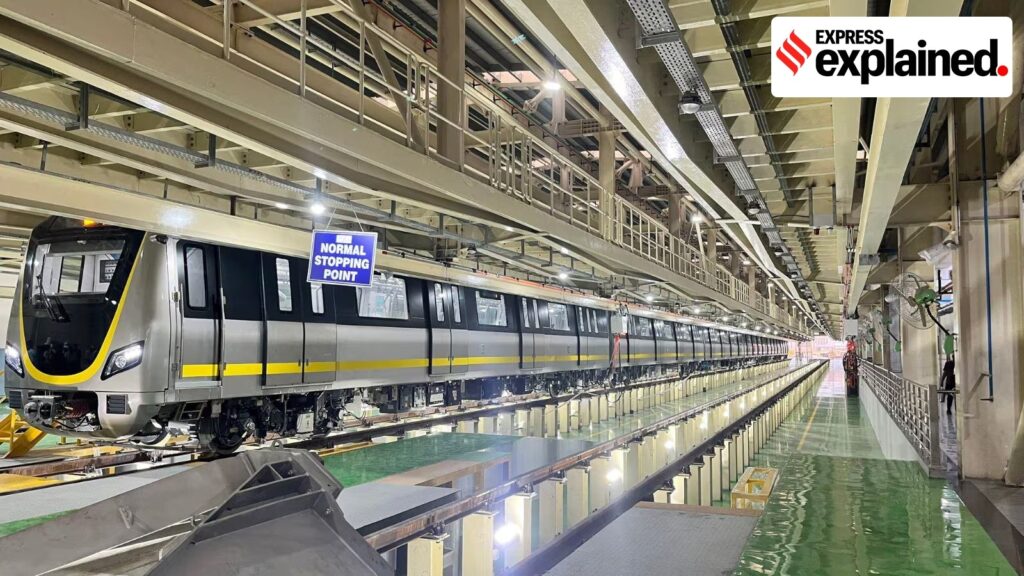An analysis by the traffic police shows that the congestion level has dropped by 10 per cent along Hosur Road after operations on Bengaluru Metro’s Yellow Line were started on August 10, following its inauguration by Prime Minister Narendra Modi.
The 19-km stretch connecting RV Road and Bommasandra, which has expanded the metro rail network to 96 km, serves as a crucial link for residential areas in the south to tech and manufacturing firms in Electronic City. Additionally, it also aims to offer major relief to commuters at the Silk Board Junction, which is infamous for traffic congestion.
According to the congestion impact analysis by the traffic police department, an overall 10 per cent (11.5 km) reduction in congestion was observed on Hosur Road along the Yellow Line metro line on August 11 compared to average traffic on Mondays. The most notable relief was observed during evening peak hours (4 pm to 9 pm) with congestion dropping by 32 per cent (21 km).
 The most notable relief was observed during evening peak hours (4 pm to 9 pm) with congestion dropping by 32 per cent (21 km).
The most notable relief was observed during evening peak hours (4 pm to 9 pm) with congestion dropping by 32 per cent (21 km).
A senior traffic police officer said, “Morning peak traffic, however, remained almost unchanged, suggesting that commuters may be more inclined to use the metro for their return journey from work rather than during their morning commute.”
By August 12 (Tuesday), the trend extended to the morning rush hour as well. Congestion between 7 am and 11 am reduced by 22 per cent (7 km) compared to average traffic on Tuesdays, indicating a gradual shift by office-goers towards the metro service.
Another traffic police officer said, “We don’t see a major decline in traffic congestion because the Yellow Line is operating only with three trains with less frequency, prompting people to still use private vehicles. However, there could be a marginal dip in congestion owing to rainfall in the past few days and lack of parking spaces, forcing people to use the metro.”
Meanwhile, S Raghavendra, a techie who commutes to work via Silk Board Junction, said, “I am not convinced that the traffic congestion along Hosur Road and near Silk Board Junction has reduced. The traffic congestion has remained unchanged despite the operations of Yellow Line.”
Story continues below this ad
Sunil K, another techie, added, “I believe it will take more time for people to fully switch to Yellow Line, because of last-mile connectivity issues at some stations.”
The Yellow Line operations have pushed Bengaluru Metro’s daily ridership from eight lakh to over 10 lakh. Over 50,000 of the travellers use the Yellow Line. However, with only three trains operating at a frequency of 25 minutes, the trains are overcrowded. Additionally, long waiting time at stations like RV Road, Electronic City, and Infosys Konnappana Agrahara has also led to overcrowding on platforms at these stations, prompting Bengaluru Metro Rail Corporation Limited (BMRCL) to deploy additional security personnel to manage the crowd.
Dr Sai Prasad, dean of a private university on Hosur Road, said, “With fewer trains, costly Metro rides, and limited last-mile connectivity, many commuters continue to prefer two-wheelers for quicker travel. We must also factor in the impact of long weekends and holidays on traffic patterns.”

